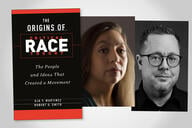You have /5 articles left.
Sign up for a free account or log in.
The goal of Plan S is simple -- make all publicly funded research immediately available to the public. It’s a goal many universities, research funders and academics say they support. The problem is agreeing on how to get there, and who should pay for it.
A flurry of documents published by publishers, research funders, scholarly societies and academics earlier this month in response to a call for feedback on Plan S highlight just how little agreement there is about how to implement the European open-access initiative, which could impact scholarly publishing practices worldwide.
In their feedback to Plan S, many organizations expressed a desire to accelerate open-access publishing, including publishers such as Springer Nature, SAGE and Wiley, but few appear to support the Plan S approach.
Under Plan S, thousands of researchers would be prevented from publishing in journals with paywalls -- including hybrid journals, which publish open-access articles alongside subscriber-only content. Several submissions argued that this restriction would be a violation of authors' academic freedom. Others questioned the feasibility of the timeline proposed by Plan S -- which could be implemented as soon as next year.
Plan S has been the subject of heated debate since it was first announced in late 2018. The initiative is led by a group of European national research funders and global charitable funders such as Wellcome and the Bill and Melinda Gates Foundation. Together these Plan S supporters are called cOAlition S.
The cOAlition S members have set out an ambitious schedule for Plan S. They intend that from Jan. 1, 2020, all research funded by members of the coalition must be published in fully open-access journals. Additionally, all content must be published under open licenses that would allow others to freely share, reuse or build upon research. While open access has grown in the United States, much scholarly publishing in the U.S. would not meet these standards.
Plan S has been described as radical, but some open-access advocates see the plans as a necessary push to change the status quo of scholarly publishing. Though open-access publishing is increasingly popular, the transition from paywalled content to open access has been slower than many advocates hoped for.
Publisher Concerns
Though current cOAlition S members collectively control billions of dollars in research funding, they only account for a small percentage of global research outputs. Earlier this year, Science reported that many more funders around the world would need to join cOAlition S for it to have a transformative impact. While it seems unlikely that U.S. national funders will join, the African Academy of Sciences and scientific leaders in China and India have expressed support. If the plan gains enough global traction, it could sound the death knell for subscription journals.
Accordingly, many publishers have expressed concern in their feedback to Plan S. The International Association of Scientific, Technical and Medical Publishers suggested that Plan S take a more “flexible approach” to increasing open-access publications, which would include keeping hybrid journals and green OA -- where articles are made available to the public for free after an embargo period.
The American Association for the Advancement of Science (AAAS) strongly opposed a Plan S proposal to introduce a cap on how much publishers can charge to make articles immediately accessible -- a fee known as an article processing charge (APC). Springer Nature, like several other publishers, expressed its commitment to open-access publishing but urged support for hybrid journals.
Steven Inchcoombe, chief publishing officer at Springer Nature, said that some of the principles of Plan S could have “unintended consequences that could be adverse rather than positive for the accelerated transition to open access.”
Springer Nature wants to accelerate open-access publishing “as quickly as possible,” said Inchcoombe. “Plan S has stated that that is also their goal, so we should be all pushing for the same outcome, but some of the things that they’ve come up with are just not going to be effective,” he said.
Hybrid journals should be embraced, “rather than eliminated,” as this is an area where open-access publications are growing rapidly, said Inchcoombe.
Funding for immediate open-access publication is also a concern, he said. “Publishers have to generate income; if they don’t charge for the content they provide, it’s very hard to see how publishers can do it all for free. Making researchers reliant on some sort of grant funding to fund OA is not a sustainable model at scale.”
Read-and-publish deals, in which institutions pay to both access subscription-only content and publish open-access articles, are a good solution to support open access in the long term, said Inchcoombe. The University of California System, for example, is pursuing such a deal with Elsevier.
Common Complaints
Lisa Hinchliffe, professor and coordinator of information literacy services at the University of Illinois at Urbana-Champaign, has been tracking the responses to Plan S. She said that “almost universally” the responses to Plan S from publishers and others affirmed the desire to continue progress toward open-access publishing. “Ten or 15 years ago we wouldn’t have seen so many responses saying, 'OA is great' -- now many people believe OA is inevitable,” she said.
Writing for the Scholarly Kitchen, Hinchliffe highlighted some key themes in Plan S responses. No. 1 on her list was the shared support for the transition to open access. No. 2 was concern than Plan S wouldn’t work in the humanities and social sciences. Grant funding for APCs is much more common in STEM fields than in others, she noted. “Few social scientists and almost no humanists are confident of having sufficient financial support to pay APCs,” she wrote. This concern was echoed by the Association of University Presses in its response to Plan S, which highlighted that the landscape for humanities and social science journals “is not analogous to that of STEM journals.”
Moving forward, Hinchliffe would like to see more detail in the Plan S implementation guidelines. She said it is not clear what it means to be a cOAlition S member and what expectations there are on funders to adhere to the rules. She predicts that when it comes to implementing Plan S, funders may not take as hard a line as the guidance suggests.
"It’s not that I don’t think the funders will do anything. But I do think a degree of detail is going to fall away," said Hinchliffe.
Time to Act
Robert Kiley, director of open research at Wellcome, said cOAlition S had received around 1,000 comments in response to its request for feedback on Plan S. A task force will review these comments in the next few weeks and make recommendations to cOAlition S on whether they need to change their guidance.
The transition to open access simply hasn't happened fast enough, said Kiley. More than three-quarters of all research is still published behind a paywall, despite 15 years of open-access advocacy, he said.
Funders such as Wellcome previously supported hybrid journals because they believed these journals would transition to full open-access publishing, but that hasn't happened at scale. "The total number of journals that have flipped is tiny. The transition just hasn't happened," said Kiley.
It's easy to find fault in the Plan S principles, said Kiley, but the bigger picture is that research funders want the research they fund to be accessible and usable by all. "The idea that some research we fund is paywalled for six months or open but not reusable is an anathema to us," said Kiley.
"Of course it's challenging, what we're trying to do," said Kiley. "But there's a bigger ambition here."
A Global Impact
Plan S may be a European initiative, but if researchers outside Europe get funding from one of the agencies that is part of cOAlition S, or collaborate with those that do, their ability to choose “how and where to publish is significantly constrained,” said Rick Anderson, associate dean for collections and scholarly communications at the University of Utah.
Wellcome and the Bill and Melinda Gates Foundation, two of the world's largest biomedical research funders, are both part of cOAlition S. Wellcome awarded 12 percent of its funding to researchers outside the E.U. in 2017-18, including over $64 million to academics in the U.S.
Limiting authors’ choice about where to publish would have mixed results, said Anderson. “On the one hand, more research publications would be freely available for all to read and reuse; that’s a good thing,” he said. “On the other hand, Plan S significantly undermines authors’ full freedom in publication, which is a pillar of academic freedom -- at least as it has traditionally been defined in the U.S. -- and I think a lot of authors would consider that a bad thing.”
Plan S would increase the prevalence of the pay-to-publish model of OA publishing, said Anderson. This model, where publishers charge authors extra to make articles immediately available to the public, has pros and cons, he said. “Among the cons are the fact that since authors usually pay the publishing fees out of grant funds, it has the effect of redirecting funding from research to dissemination. People will have different views of how the costs and benefits balance out.”
The Bill and Melinda Gates Foundation already requires immediate open-access publishing of research. U.S. government agencies have also started requiring free public access to research they fund, but they allow authors to publish wherever they wish -- as long as they make the results free to read within a year. Unlike the Gates Foundation, and contrary to Plan S, U.S. government agencies do not require authors to publish their work under open licenses that would allow others to access, reuse or redistribute their work with few or no restrictions.
At scale, Plan S could result in a two-tier publishing system -- creating one set of rules for European researchers and another for researchers from elsewhere, said Anderson. “European funders have the right to impose whatever conditions on their funding they wish,” he said. But he thinks ultimately Plan S may end up doing more harm than good.
“I think scholarly publishing is best served by a diverse ecosystem of publishing models, one that allows for multiple approaches to balancing the rights and needs of authors, readers, learned societies and publishers. Plan S is, very explicitly, an attempt to reduce that diversity,” said Anderson.
Plan S is built on the belief that only one open-access model should be allowed -- one that makes all scholarly publications immediately available, said Anderson. But deeper than the question of implementation is the question of who should get to decide what the future of scholarly communication will be, he said.
“Will it be shaped in a democratic and participatory way that includes the voices and perspectives of all members of that ecosystem, or will its shape be determined by only a few?”




